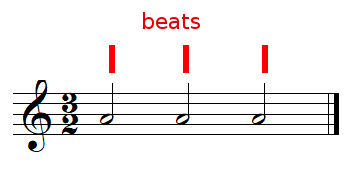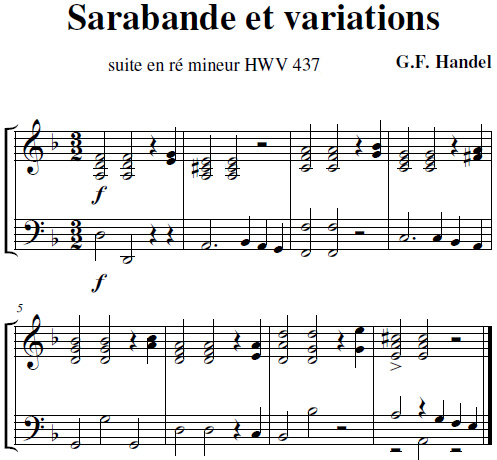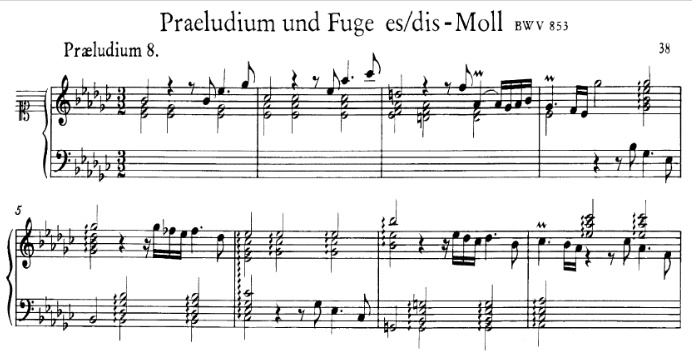Explanation of 3/2 time signature
In the article time signature, this is explained that:
- the top number indicates the number of time units in a measure (bar 
- the bottom number determines the unit of time.
We can visually translate 

That is to say that there are 3 half notes (minims 

1 half note 

2 quarter notes 

4 eighth notes 

and so on...
Examples found in famous works
Sarabande and Variations, George Frideric Handel
Here is an example of a 3/2 time signature, with the musical work Sarabande and Variations in D minor from the composer George Frideric Handel.
3/2 time signature is classified as simple triple meter: There are 3 beats per measure (bar 


Bach, Prelude in E-flat minor, BWV 853
Prelude n°8 BWV 853 in E flat minor from book 1 of the well-tempered keyboard by Johann Sebastian BACH uses 

Royalty-free sound sample recorded by pianist Kimiko Ishizaka in 2015 (CC BY 4.0 license, source).
The fugue that follows this prelude is composed in the enharmonic key of E flat minor, i.e. in D sharp minor.



3/2 is a "simple triple time signature"simple means every beat is made up of 2 beats or each of these beats can be broken into two beats and triple because of containing 3 half notes in a measure, meaning there are 3 half or minim notes in a measure. That means all the notes in each measure must add up to 3 half notes, not more than or less than that. Any combination of notes can be used as long as they add up to 3 half notes, such as; one half note, two quarter notes,two eighth notes and one quarter note rest or so on. In time signatures with 4 as the bottom number, such as 4/4 , 3/4 etc. time, the half note is two beats long. However, when 2 is used as the bottom number a minim is 1 beat long.As we know top number in a time signature says how many beats are to be contained in each bar that is 3 and bottom number the note denomination,which represents one beat that is the minim or half-note.So 3/2 can be interpreted as three minim beats per bar and must be counted as 1 2 3 but will never be counted as 1 (2) 3 (4) 5 (6) because each half note gets 1 beat here.
Reply to this/these comment(s)